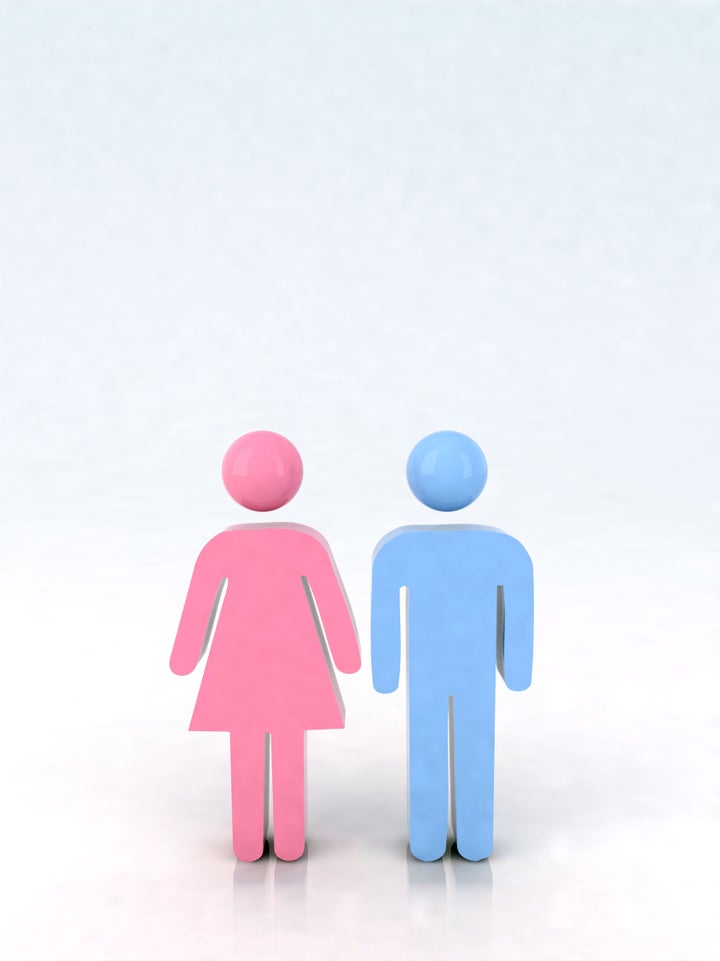
Imagine that there are two bathrooms, one labeled "black people" and one labeled "white people." For an Asian person or an Arab person (or any person who is not marked "Caucasian" or "African-American" by the U.S. Census Bureau), there are two layers of problems to be addressed in choosing a bathroom to use. The first issue is that there are only two identities represented, which, in a world with a vast array of racial diversity, is clearly an improvident method of social categorization. Secondly, the uncategorized individual needing to use the bathroom is forced to either not use a bathroom at all or find a way to identify themselves as either black or white enough to use one of the given options.
I recently used this anecdote to explain to an acquaintance the experience of being transgender in a binary-based society. Since starting my transition a year ago, and even before transitioning, I have woken up most mornings to the self-directed question, "Do I look masculine enough to pass today?" Regardless of the pressure from certain circles within the queer community to embrace a "genderqueer" identity and reject gender binaries for either personal or political motivations, my life just has not played out that way. I don't identify with my female body; my gender expression follows the pattern of a pretty typical cisgender man. Unlike some of my genderqueer friends, I don't thrive off my gender ambiguity or enjoy the experience of living outside the box, at least in terms of gender. The ambiguity of my appearance makes me uncomfortable, and my nonconforming gender expression gives me anxiety.
Delving deeper into bathroom segregation, genderqueer people and actively transitioning transsexuals can both identify with the "black and white" bathroom dilemma. To have "male"- and "female"-delegated bathrooms is to say that there are only men and women in this world. From a biological perspective, that just isn't true. From a social perspective, sexual identity and gender expression blur the lines of "masculinity" and "femininity," the two backbones that keep our delicate binary society in motion. Not unlike the growing understanding of racial "mixing" that has created literally hundreds of racial identities in the world, gender is also stepping outside the boundaries that traditional institutionalized societal structures feel so comfortable in. In the context of bathrooms, identifying outside traditional male or female expression will keep you from having a place at the table (or the toilet).
Because I identify within our constructed binary, my experience with bathroom selection leans less toward demanding genderless bathrooms and more toward finding a way to fit into the binary bathrooms that have defined my 21 years of life. In a public setting, when I know I will be forced into using a gendered bathroom, or not going to the bathroom at all, I go through a series of self-checks:
- First, I assess my location. Being at a familiar location, like my university, is an automatic deterrent to comfort because the likelihood that I will know someone in either the women or men's bathroom is relatively high. There are people at the university who have known me for years and know that I am transitioning but would react negatively to me trying to use a men's bathroom. On the other hand, there are quite a few people who have met me recently, assume that I am male based on my male presentation, and would be alarmed to find me in a women's bathroom.
Although it seems absurd to most Americans to put, say, a Hispanic person in the position of trying to "pass" as white or black in order to use a bathroom, there is little discussion about the realities of gendered bathrooms outside the small (but growing) community of trans individuals and their allies. In a university setting, specifically, there is a growing need to address the inequalities furthered by gendered bathrooms, which make genitalia -- and your ability to conform your genitalia to "genital standards" -- the basis of identity. Traditional masculine men and feminine women are rapidly becoming just two options in a much larger array of gender expressions, and those of us with transitioning bodies, or identifying outside the binary, would like to have a safe place to pee.